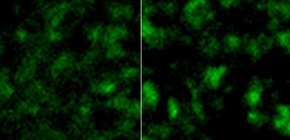
Accumulation of α-synuclein caused by abnormalities in SNARE complex
Under the leadership of MICHIZUKI Hideki , Professor, Course of Integrated Medicine (Neurology), Graduate School of Medicine, Osaka University, MIZUNO Yoshikuni , Visiting Professor, Department of Neuroregenerative Medicine, School of Medicine, Kitasato University, TAKAHASHI Masami , Professor, Department of Biochemistry and SAKAGAMI Hiroyuki , Professor, Department of Anatomy, a group of researchers have discovered that α-synuclein (αSyn) is accumulated in presynaptic terminals because of abnormalities in soluble N-ethylmaleimide-sensitive factor attachment protein receptor (SNARE) complex necessary for releasing neurotransmitter and that accumulation of αSyn differs according to the type of neuron. It is said that accumulation of αSyn causes α-Synucleinopathies such as Parkinson's disease (PD), dementia with Lewy bodies (DLB), and multiple system atrophy (MSA); however, the mechanism for developing such diseases has remained unclear. This group's discovery is a new step toward the clarification of the mechanism of α-synucleinopathy development and could be very important in the development of therapeutic medicines and treatment.
Abstract
Pathological examination of dementia with Lewy bodies patients identified the presence of abnormal α-synuclein (αSyn) aggregates in the presynaptic terminals. αSyn is involved in the regulation of soluble N-ethylmaleimide-sensitive factor attachment protein receptor (SNARE) complex. Importantly, αSyn-transgenic mouse and postmortem examination of patients with Parkinson's disease have demonstrated the abnormal distribution of SNARE protein in presynaptic terminals. In this study, we investigated the effects of SNARE dysfunction on endogenous αSyn using Snap25S187A/S187A mutant mice. These mice have homozygous knock-in gene encoding unphosphorylatable S187A-substituted synaptosomal-associated protein of 25 kDa (SNAP-25). The mice displayed a significant age-dependent change in the distribution of αSyn and its Ser129-phosphorylated form in abnormally hypertrophied glutamatergic nerve terminals in the striatum. Electron-microscopic analysis revealed the abnormally condensed synaptic vesicles with concomitant mislocalization of αSyn protein to the periactive zone in the glutamatergic nerve terminals. However, the Snap25S187A/S187A mutant mouse harbored no abnormalities in the nigrostriatal dopaminergic neurons. Our present results suggest that SNARE dysfunction is the initial trigger of mislocalization and accumulation of αSyn, and probably is an important pathomechanism of α-synucleinopathies.

To learn more about this research, please read the full research report entitled " Accumulation of α-Synuclein Triggered by Presynaptic Dysfunction " at this page of the Journal of Neuroscience website.
Related link :
